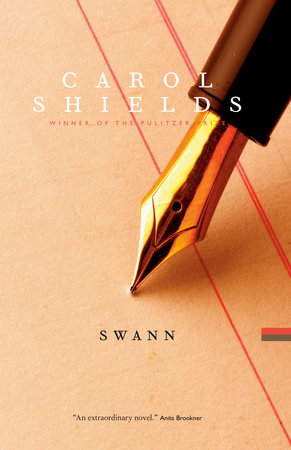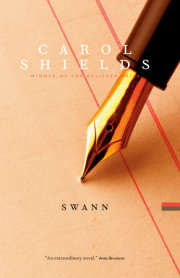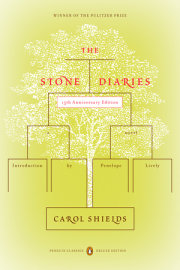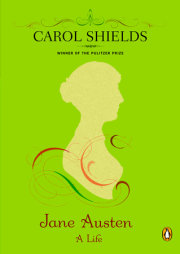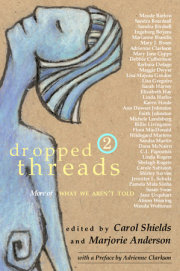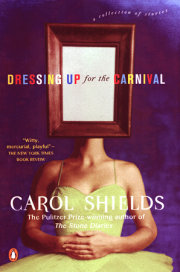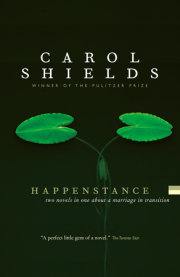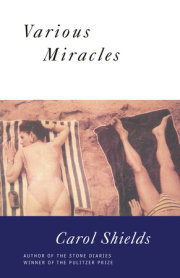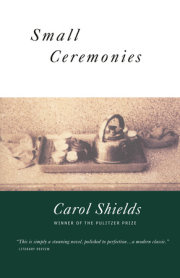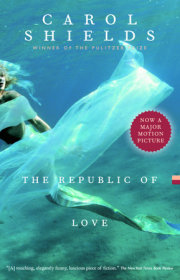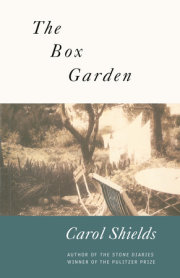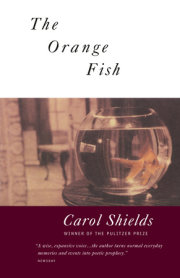1
As recently as two years ago, when I was twenty-six, I dressed in ratty jeans and a sweatshirt with lettering across the chest. That’s where I was. Now I own six pairs of beautiful shoes, which I keep, when I’m not wearing them, swathed in tissue paper in their original boxes. Not one of these pairs of shoes costs less than a hundred dollars.
Hanging in my closet are three dresses (dry clean only), two expensive suits and eight silk blouses in such colours as hyacinth and brandy. Not a large wardrobe, perhaps, but richly satisfying. I’ve read my Thoreau, I know real wealth lies in the realm of the spirit, but still I’m a person who can, in the midst of depression, be roused by the rub of a cashmere scarf in my fingers.
My name is Sarah Maloney and I live alone. Professionally -- this is something people like to know these days -- I’m a feminist writer and teacher who’s having second thoughts about the direction of feminist writing in America. For twenty-five years we’ve been crying:
My life is my own. A moving cry, a resounding cry, but what does it
mean? (Once I knew exactly what freedom meant and now I have no idea. Naturally I resent this loss of knowledge.)
Last night Brownie, who was sharing my bed as he does most Tuesday nights, accused me of having a classic case of burn-out, an accusation I resist. Oh, I can be restless and difficult! Some days Virginia Woolf is the only person in the universe I want to talk to; but she’s dead, of course, and wouldn’t like me anyway. Too flip. And Mary Swann. Also dead. Exceedingly dead.
These moods come and go. Mostly Ms. Maloney is a cheerful woman, ah indeed, indeed! And very busy. Up at seven, a three-kilometre run in Washington Park -- see her yupping along in even metric strides -- then home to wheat toast and pure orange juice. Next a shower, and then she gets dressed in her beautiful, shameful clothes.
I check myself in the mirror:
Hello there, waving long, clean, unpolished nails. I’ll never require make-up. At least not for another ten years. Then I pick up my purse-cum-briefcase, Italian, $300, and sally forth.
Sally forth, the phrase fills up my mouth like a bubble of foam. I’m attentive to such phrases. Needful of them, I should say.
I don’t have a car. Off I go on foot, out into a slice of thick, golden October haze, down Sixty-second to Cottage Grove, along Cottage Grove, swinging my bag from my shoulder to give myself courage. Daylight muggings are common in my neighborhood, and I make it a point to carry only five dollars, a fake watch, and a dummy set of keys. As I walk along, I keep my Walkman turned up high. No Mozart now, just a little cushion of soft rock to help launch the day with hope and maybe protect me from evil. I wear a miraculous broad-brimmed hat. The silky hem of my excellent English raincoat hisses just at knee length. I have wonderful stockings and have learned to match them with whatever I’m wearing.
“Good morning, Dr. Maloney,” cries the department secretary when I arrive at the university. “Good morning, Ms. Lundigan,” I sing back. This formal greeting is a ritual only. The rest of the time I call her Lois, or Lo, and she calls me Sarah or Sare. She’s the age of my mother and has blood-red nails and hair so twirled and compact it looks straight from the wig factory. Her typing is nothing less than magnificent. Clean, sharp, uniform, with margins that
zing. She hands me the mail and a copy of my revised lecture notes.
Today, in ten minutes, Lord help me, I’ll be addressing one hundred students, ninety of them women, on the subject of “Amy Lowell: An American Enigma.” At two o’clock, after a quick cheese on pita, I’ll conduct my weekly seminar on “Women in Midwestern Fiction.” Around me at the table will be seven bright postgraduate faces, each of them throwing off kilowatts of womanly brilliance, so that the whole room becomes charged and expectant and nippy with intelligence.
Usually, afterwards, the whole bunch of us goes off for a beer. In the taproom on Sixty-second we create a painterly scene, an oil portrait -- women sitting in a circle, dark coats thrown over the backs of chairs, earrings swinging, elbows and shoulders keeping the composition lively, glasses held thoughtfully to thoughtful lips, rolling eyes, bawdiness, erudition.
They forget what time it is. They forget where they are -- that they’re sitting in a taproom on Sixty-second in the city of Chicago in the fall of the year in the twentieth century. They’re too busy talking, thinking, defining terms, revising history, plotting their term papers, their theses, and their lives so that no matter what happens they’ll keep barrelling along that lucent dotted line they’ve decided must lead to the future.
Copyright © 1996 by Carol Shields. All rights reserved. No part of this excerpt may be reproduced or reprinted without permission in writing from the publisher.

